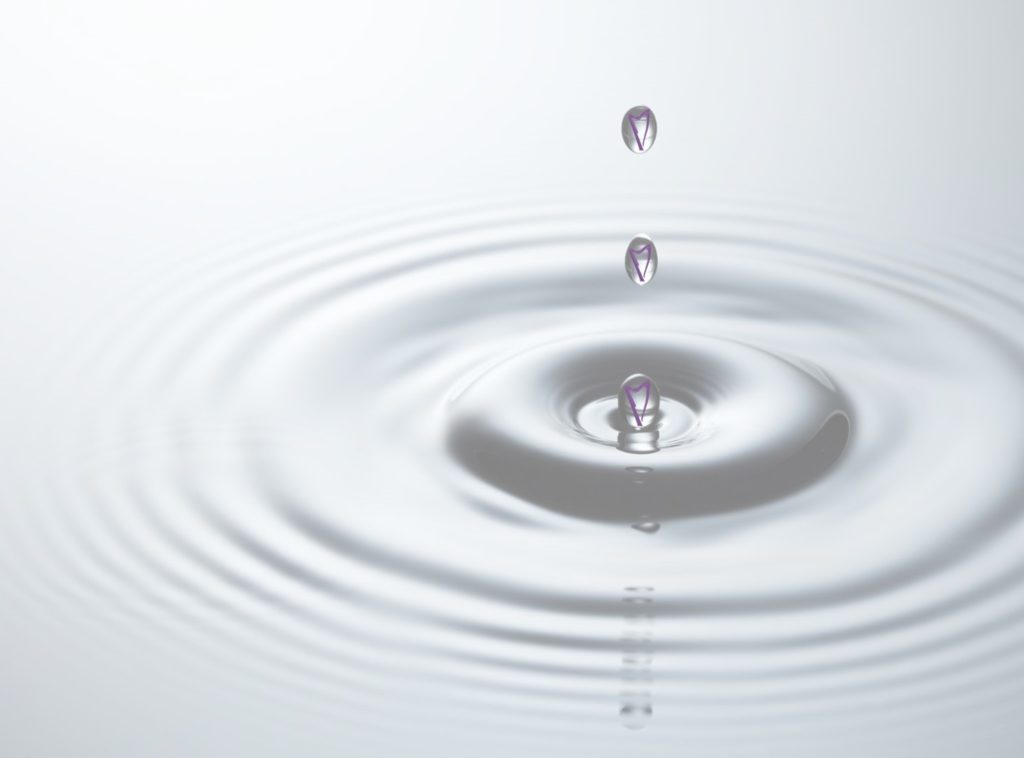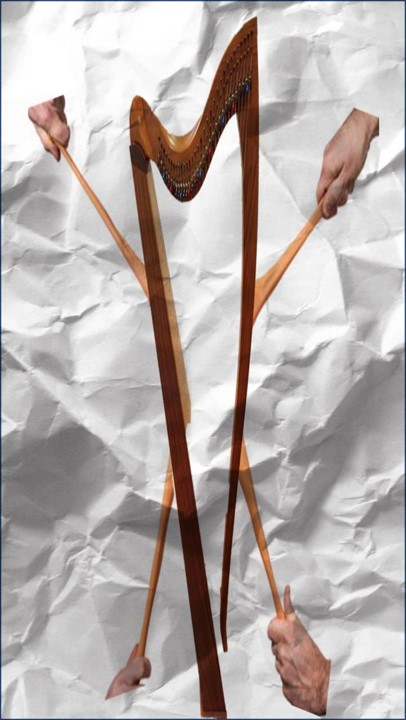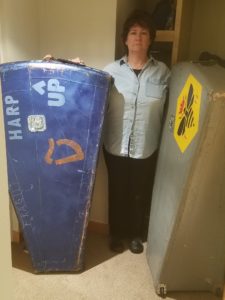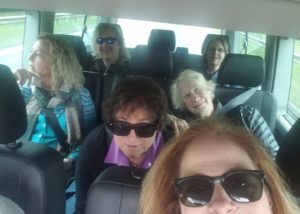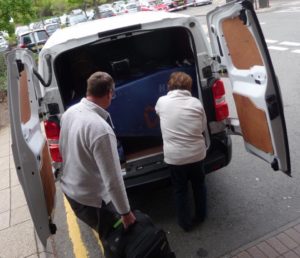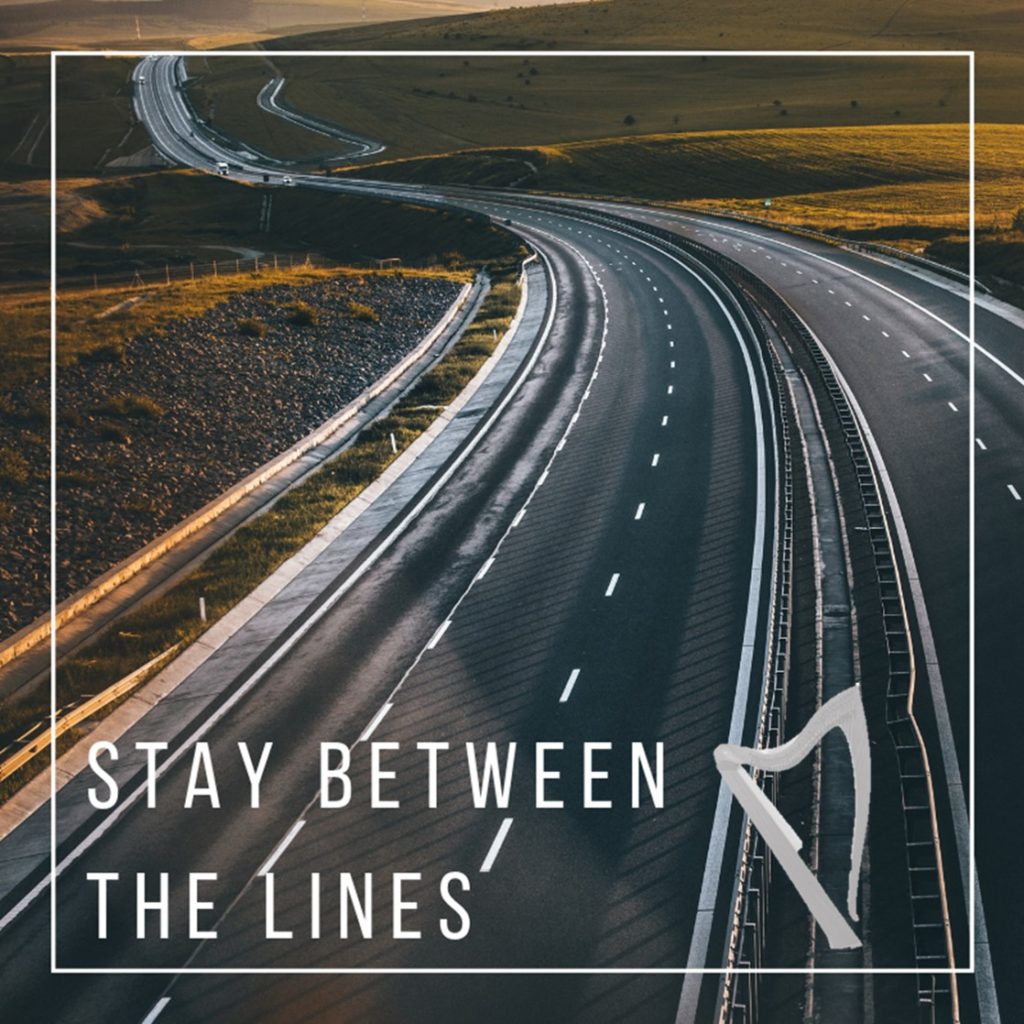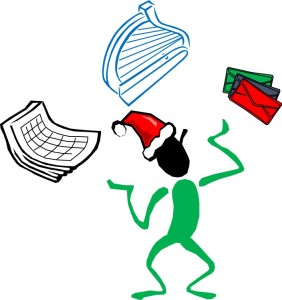It’s nearly October (yikes!), the summer is over, the kids are back to school, the days are palpably shorter. And you know what that means – the holidays are nearly here!
There are only 12 weeks to go – but you know that festivities will start in about six to eight week so there will be plenty of time to fit in all the parties, pageants, festivals, parades, celebrations, get-togethers, gift exchanges, as well as gatherings. And each of those will be an opportunity to share one of your greatest gifts – your music!
Better get ready – but how? Here are ten (relatively easy) steps:
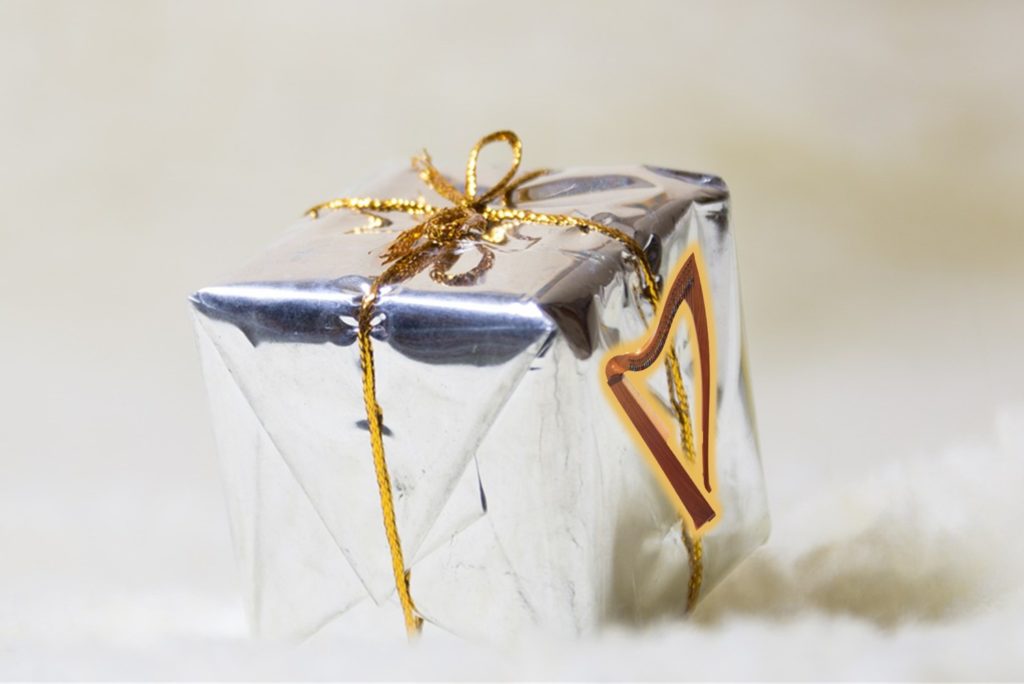 First, manage your expectations. Be realistic. You might want to capture all the things you will be doing during the run up to the season as well as the season itself. You know you will have work and practice, and family traditions, and social events that you anticipate you will be part of. You can make a list or pencil them into your calendar or make a spreadsheet. What you really need to know is how much time you actually have. How much time do you really have to practice? How much time do you have to prepare? How much time do you have to share?
First, manage your expectations. Be realistic. You might want to capture all the things you will be doing during the run up to the season as well as the season itself. You know you will have work and practice, and family traditions, and social events that you anticipate you will be part of. You can make a list or pencil them into your calendar or make a spreadsheet. What you really need to know is how much time you actually have. How much time do you really have to practice? How much time do you have to prepare? How much time do you have to share?
Second, manage other people’s expectations. If you want to be playing for others, let it be known so you might be asked. Not interested in playing for an event? Just say no. It is, however, the season for music and people will try to be persuasive (or maybe they will gently bully you into trying to get you agree). Worried about saying no? Ask someone you know who does want to be playing. Be prepared with their name and contact information. It will be a win-win-win: you don’t have to give a flat no because you have a referral ready (you win). The referred harper gets a gig they might not have been positioned for otherwise (harper wins). And the audience gets a willing performer (so they win too).
Third, make a list of the tunes you have played in the past. These will likely come back quickly and can be the backbone of your playing.
Fourth, make a “learn these” list of the tunes you want to play but haven’t learned yet. These will be work, but they will be worth it! Be reasonable given the amount of time you have to practice.
Fifth, if you will be playing for others, estimate how much music you will need. I usually guestimate about 6 – 8 tunes to 15 minutes. This might be conservative, but it assures that I don’t run out of music before I run out of time. I also suggest you build two set lists – because I like to be overprepared and having too much music means I can pick and choose once I get there depending on how the audience is responding. It also means that I won’t have to play something that feels shaky or just hasn’t come together enough yet. Remember that you can insert other music into the list – include the winter themed tunes or favorites to make an enjoyable performance. Especially later in the season, people will begin to fatigue of holiday music so some other tunes will wake them up and keep them engaged.
Sixth, now that you have a list and know about how many tunes you’re looking for, play through your old tunes and critically (but not harshly) determine what work is needed to get them up to scratch. Revise your list as needed (move anything that feels like it might be a train wreck to the “learn these” list).
Seventh, make a schedule to get the new music learned and ready to go and to make the old stuff polished and shone. This will be a plan to structure your practice between now and the holidays. Be realistic!
Eighth, schedule your practice time. Write it in your calendar. Make a date with your harp every day. Keep practicing your “regular” music too – although they come quick, the holidays are here and gone – so you might as well stay up to date for January!
Ninth, keep an eye on your plan and revise as necessary! Update your lists, adjust as needed, keep the end in mind. Remember the goal is to play well and feel comfortable when it’s time to play.
Finally, have fun! You’re going to make so many people happy when you share your gift – make sure one of those is you! The holidays are a time for joy – share yours!
Follow these ten steps and you will be well on your way to sharing your gift! How do you prepare for the holidays? Share your tips in the comments.
